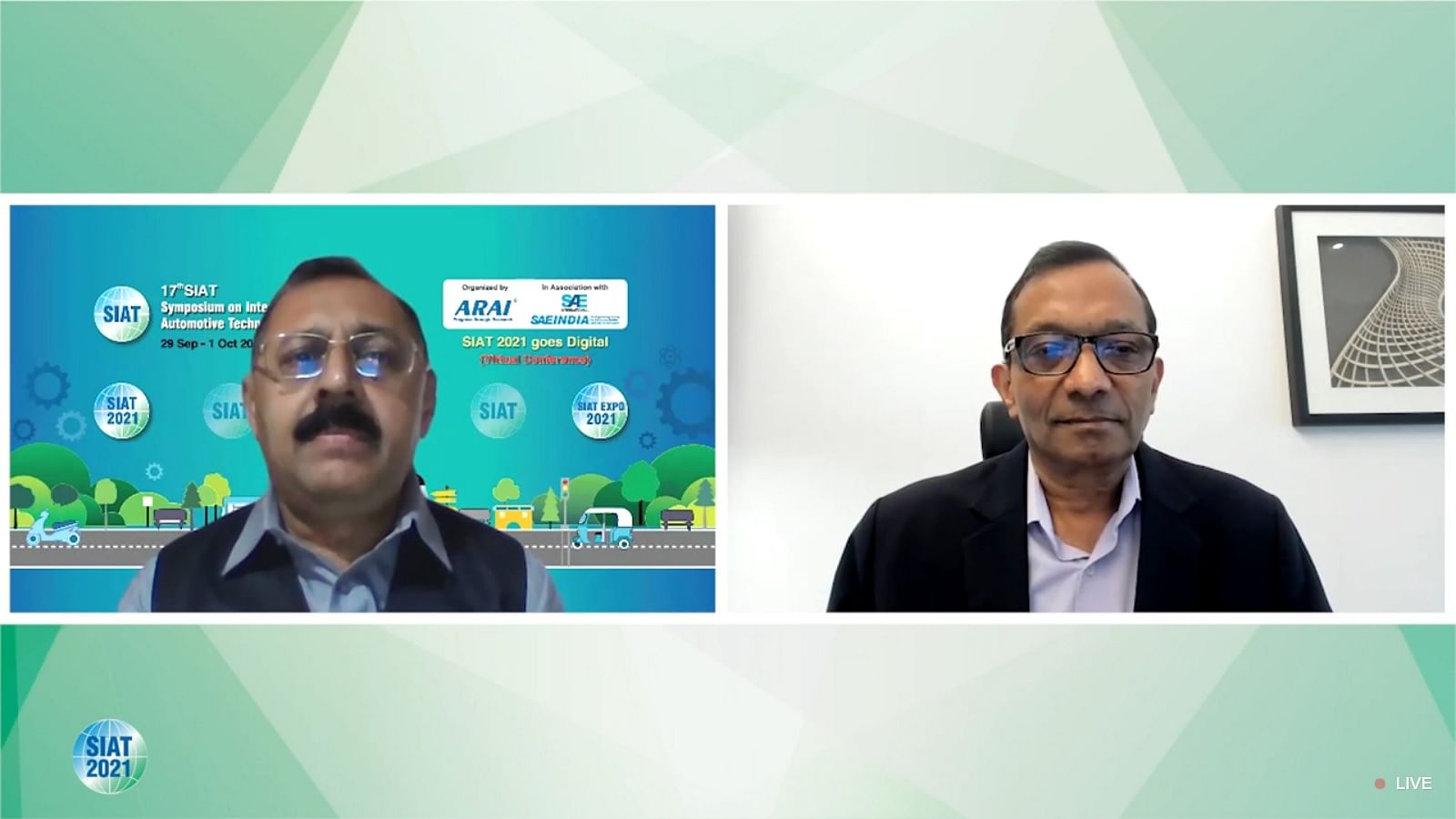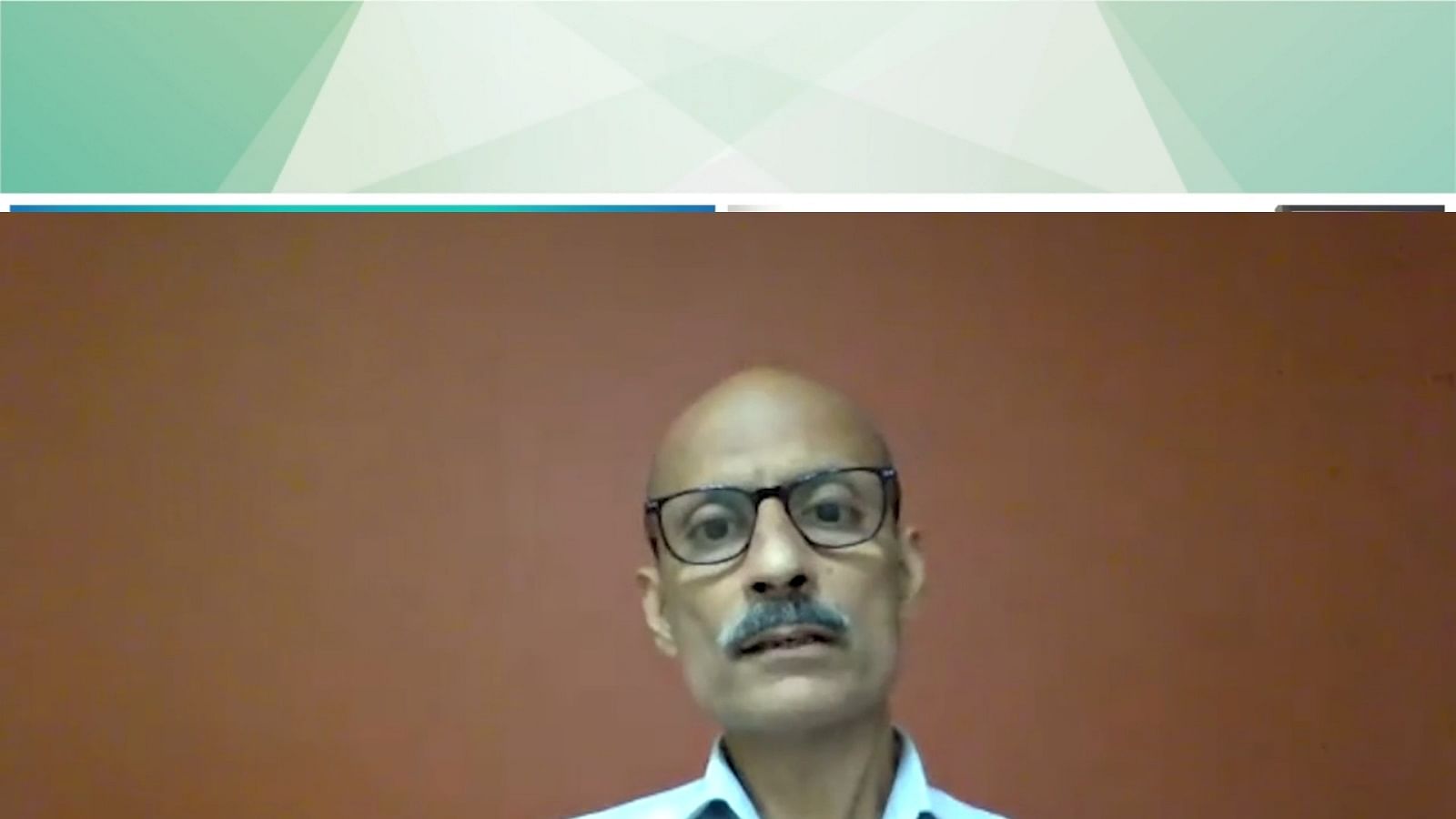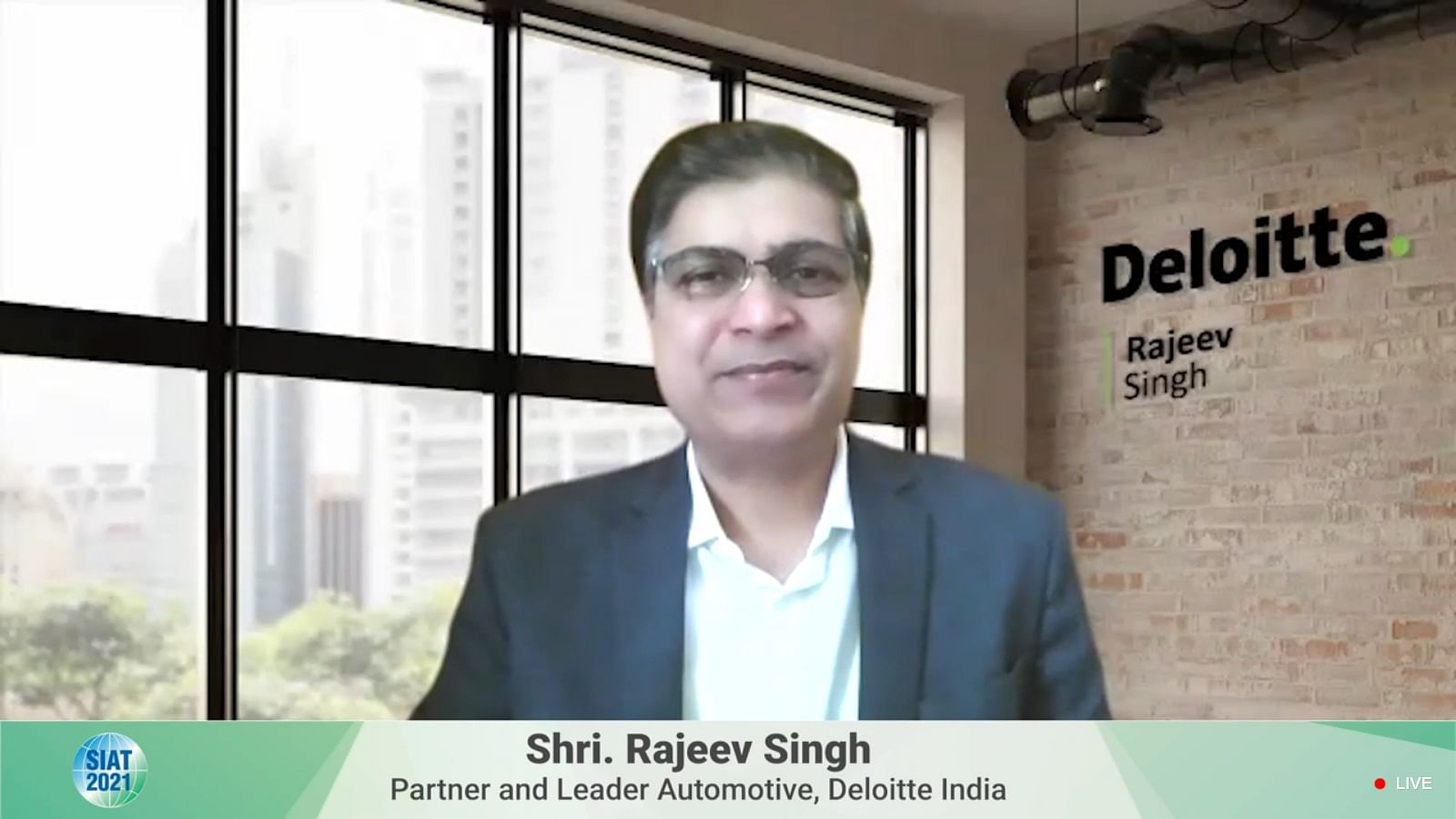SIAT 2021: Future mobility to be redefined by accessibility, safety, tech and green vehicles
Day two of SIAT2021 saw an engaging debate on smart mobility.
“Smart mobility is at inflection point globally. The future will be driven by 4 things – technology, clean energy, economic prosperity and greater need for accessibility,” remarked Dr. Pawan Goenka, independent director, Bosch & Chairperson designate for INSPACe – Department of Space, government of India.
Dr Goenka, was speaking as the chairman at the Plenary Session 3 on the theme of Smart Mobility at the annual Symposium on International Automotive Technology (SIAT) 2021, organised by nodal automotive testing and validation agency – ARAI.

The event saw participation from three speakers – Swapnil Jain, co-founder and CTO, Ather Energy; Tarun Aggarwal, Executive Director R&D, Maruti Suzuki India and Rajeev Singh, Partner and Leader Automotive, Deloitte India.
With each speaker sharing their own perspective and predictions on what they think will be the factors affecting and influencing the future of mobility in India.
“India is a very unique market with average temperatures higher than many parts of the world. This is a very important factor for anyone developing electric vehicle solution especially when it comes to batteries,” said Jain.

He was speaking on the topic of ‘Development of cost-effective E-mobility solutions for India’. According to him, when anyone is developing an electric two-wheeler one has to understand that for a cost-conscious market like India it is imperative that OEMs/start-ups look at optimising their battery architecture for the domestic conditions, a simple ‘copy-paste’ job may not be the ideal solution.
“When you are trying to squeeze out the best performance in temperatures around 45-50-deg Celsius, adopting liquid cooling solution for the cost conscious two-wheeler is not practical. You need to have passive cooling solution. Then there is the challenge of tough road conditions, existing petrol two-wheelers have set high standards for performance and reliability, lack of talent and competitive pricing are other important factors that one needs to look at in the Indian electric vehicle industry.”
He says, that while most people think it is very easy to build electric vehicle but it’s the exact opposite specially in the Indian market. Citing the example of Ather Energy, Jain mentioned that the start-up was founded as a vision not to just build an alternate to petrol-powered scooters, which are already very efficient, but to provide more features as well. Companies need to design a product that finds its niche, “You cannot be a replacement from day one for mass market product. One needs to invest a lot in R&D and ecosystem. It is a game of continuous improvement, and it will take over a decade to perfect the product. One needs to commit for almost a decade, the EV revolution is not going to come overnight,” explained Jain.

Representing the country’s largest carmaker, Tarun Aggarwal, Executive Director R&D, Maruti Suzuki India (pictured above), highlighted that the megatrend of ACES (Autonomous, Connected, Electric and Shared) needs to be looked upon in the Indian context. According to Aggarwal, ACES in the Indian context is – Affordable, Connected, Electric and Safe.
“There are lot of things that is happening which we didn’t think was possible 5-10 years ago. The Indian economy is growing for a decade or so, despite some bumps. Consumerism is growing in India, which is being led by demographic change. Urban population is rapidly increasing, while rising affluence is there but customers are still value conscious.”
He believes that digitalisation in India is maybe more than other countries. Smartphones and cheap internet availability have enabled higher digital exposure in the country. “Digital will become very important as we go along. New consumers are young they are digital savvy, cars are becoming more connected. Future trend will change from smart ownership to smart usership.”
Aggarwal believes that two India specific challenges that the future mobility needs to address is – pollution and safety. “India has one of the highest numbers of polluted cities and road accidents. This is despite one of the lowest penetration of cars per capita in the country.”
Some of the technologies that vehicles can look at include – pothole, speed breaker detection and alert system; dynamic speed alerts and pedestrian detecting using location data. He believes that just like 4G technology disruption which gave birth to a number of new-age start-ups, the 5G connectivity tech will be a game changer for the automotive sector.

Rajeev Singh, partner and leader automotive, Deloitte India shared his perspective on the five big drivers that is shaping the future of mobility – urbanisation, economic growth, shifting consumer preference, climate change and technology / digitalisation.
Singh believes that the Indian automakers are at a slightly higher risk compared to their global counterparts, as the number of people using ride-hailing services is quite higher compared to even countries like Japan, Germany, China. “We are just behind USA, and it is just growing. In future it is going to be more about service of moving people and goods from point A to B. The profit pool for OEMs and auto components are going to change from the existing product to service. The impact will not just be limited to automotive and immediate segments, but through the extended automotive ecosystem.”
He believes that there is huge opportunity for the auto industry players to come together from the future of mobility perspective. “The journey is not going to be easy for existing players. There will be a shift from volume to value, from product to service selling. From consumer perspective it is about moving from ownership to usage. The challenge for existing players is to do two things simultaneously – from doing what they are doing so well to also being able to do what the new demands are. What is not going to change is the moving from point A to B faster, safer, and lower cost. Organisations that will be able to tick all the 3 boxes will be successful.”
RELATED ARTICLES
VinFast’s second plant in Vietnam goes on stream ahead of India factory
Vietnamese EV maker’s second plant in its home market, which has a 200,000 EVs-per-annum capacity, will focus on produci...
Continental exits TBR market in India, shifts focus to car and SUV radials
German tyre manufacturer aims to tap the double-digit market growth opportunity for big SUV and luxury car tyres which w...
New ZF SELECT e-drive platform gives EV makers a choice in 100 to 300 kW range
Modular e-drive platform optimally matches 800-volt overall system and components such as the electric motor and power e...





 30 Sep 2021
30 Sep 2021
 5218 Views
5218 Views





 Autocar Professional Bureau
Autocar Professional Bureau




